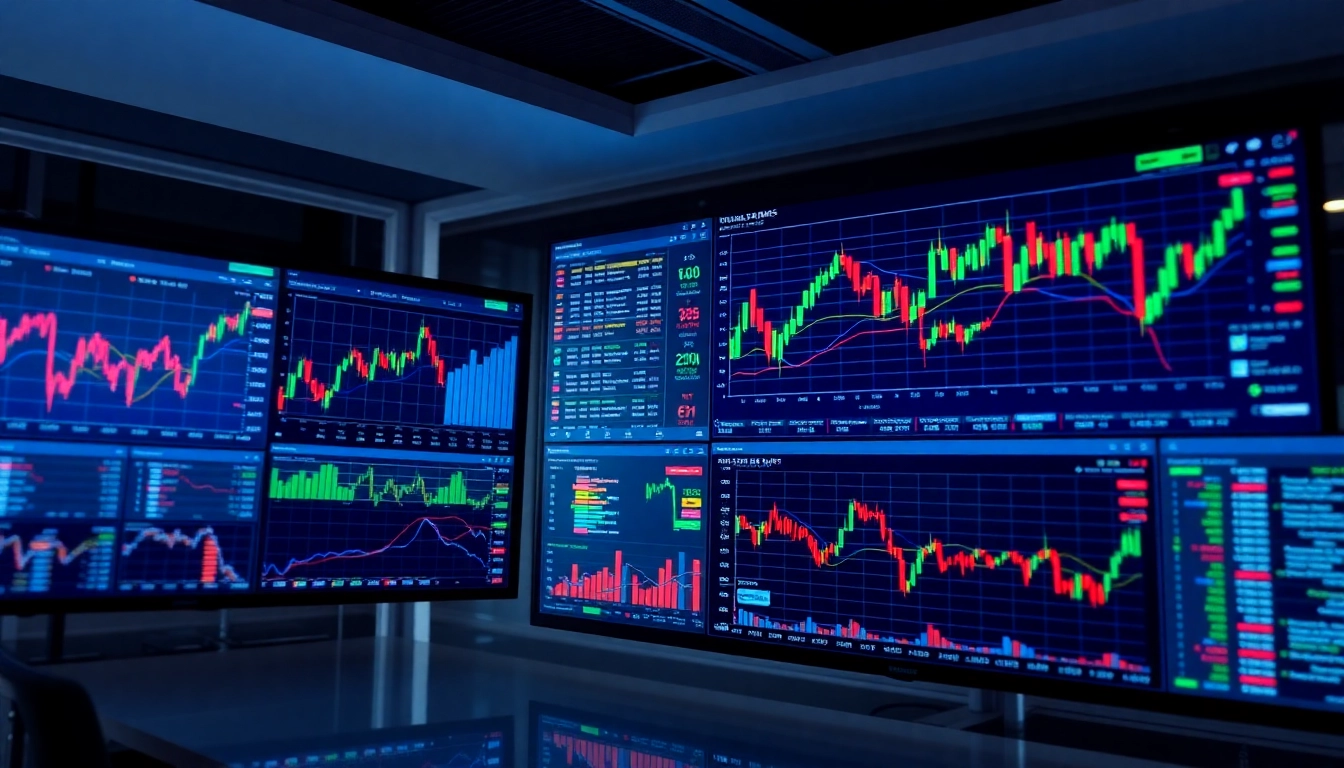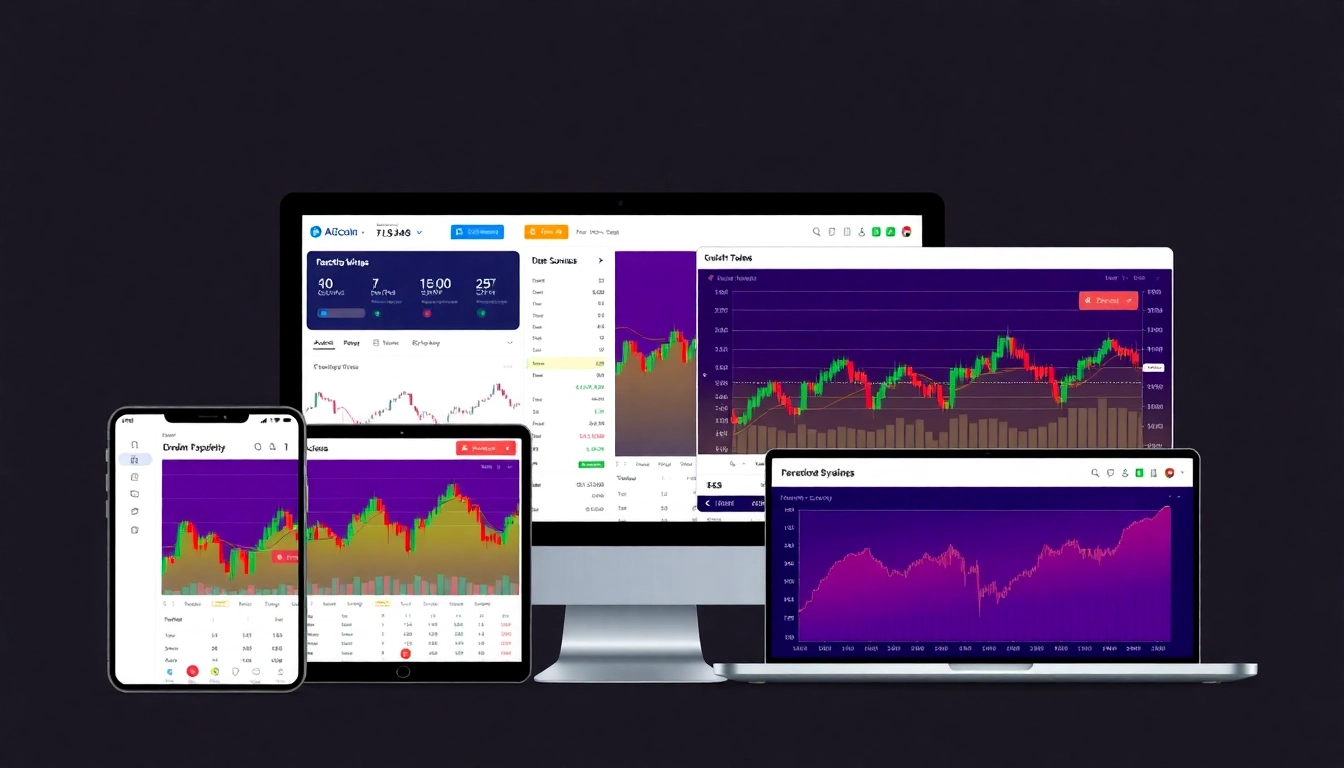Comprehensive Guide to Mastering Trading View: Unlocking the Power of Market Analysis
In today’s fast-paced financial markets, having access to accurate, real-time market data and advanced analytical tools is essential for traders and investors aiming to make informed decisions. One platform that has revolutionized market analysis and social trading is trading view. Recognized globally for its user-friendly interface, comprehensive charting tools, and vibrant community, Trading View empowers traders to analyze markets, develop strategies, and connect with a broad network of like-minded individuals. This guide explores the platform’s core features, setup best practices, advanced analytical techniques, and actionable tips to optimize your experience and improve your trading outcomes.
Understanding Trading View and Its Key Features
What Is Trading View and Why It’s Popular Among Traders
Trading View stands out as a leading financial analysis platform, combining dynamic charting, social networking, and trading integration in one seamless environment. Its popularity stems from its accessibility—offering both free and premium plans—and its ability to cater to traders at all experience levels, from beginners to sophisticated professionals. The platform supports a wide range of assets including stocks, cryptocurrencies, forex, commodities, and indices, making it a versatile tool for diverse trading strategies.
Designed for both clarity and depth, Trading View’s social features enable traders to share ideas, discuss market conditions, and learn from global insights—fostering a collaborative environment. Its real-time data feeds, customizable chart layouts, and access to an extensive library of indicators make it an indispensable tool for market analysis.
Understanding the Platform’s Interface and Tools
Trading View’s intuitive interface organizes complex data into digestible formats. The main workspace features interactive charts that can be customized extensively—users can select different chart types (candlestick, line, bar), timeframes, and overlays. The toolbar provides quick access to drawing tools (trend lines, Fibonacci retracements, channels), technical indicators, and scripting options.
Additional features include a social feed where traders publish their ideas, a news aggregator for latest market developments, and multiple watchlists for asset tracking. The platform’s layout can be tailored to individual preferences, enabling seamless switching between analysis, trading, and social engagement without losing focus.
How Trading View Enhances Market Analysis
Trading View enhances market analysis by providing a suite of advanced tools tailored for technical analysis and pattern recognition. The platform’s comprehensive library of indicators—such as Moving Averages, MACD, RSI, Bollinger Bands—is easily customizable. Moreover, its scripting language, Pine Script, allows traders to create custom indicators and automated strategies, adding a new dimension of personalized analysis.
With features like real-time alerts based on specific market conditions, traders can stay alert to critical market movements without constantly monitoring their screens. The ability to view multiple assets simultaneously and compare different markets helps traders identify correlations, divergences, and opportunities that might otherwise be overlooked. Overall, Trading View turns raw data into actionable insights through its powerful visualization and analytical capabilities.
Setting Up Your Trading View Profile for Success
Personalizing Watchlists and Indicators
Effective market analysis begins with organization. Setting up personalized watchlists allows traders to keep track of their preferred assets—be it stocks, cryptocurrencies, or forex pairs—and quickly access relevant charts and data. Trading View’s watchlist feature is highly customizable, enabling categorization by asset class, trading strategy, or market region.
In addition to watchlists, customizing indicators is vital for tailored analysis. Traders can add multiple indicators to charts, adjust their parameters, and save preset layouts. For instance, a swing trader might focus on Moving Averages and Fibonacci retracements, while a day trader may prioritize volume and momentum indicators. Combining these tools provides clarity and precision in identifying trading setups.
Utilizing Custom Alerts and Notifications
To stay ahead of market movements, traders should leverage Trading View’s custom alert system. Alerts can be set based on price levels, indicator crossovers, or pattern formations. For example, a trader can set an alert for when Bitcoin crosses above a critical resistance level or when the RSI indicates overbought conditions.
These alerts can be received via email, SMS, or app notifications, ensuring traders respond promptly to market developments regardless of their location. Effective use of alerts minimizes the risk of missing important entry or exit points, especially during volatile market phases.
Connecting Trading Accounts for Seamless Trading
Trading View offers integration with various brokerage platforms, enabling users to execute trades directly from their charts. Connecting your trading accounts streamlines the workflow, reducing delays and errors caused by switching between different platforms. Before linking accounts, ensure compatibility and security protocols are in place to protect your assets.
This integration supports features such as one-click trading, order management, and tracking trade performance within the same interface—further enhancing efficiency and decision-making confidence.
Advanced Techniques for Effective Market Analysis Using Trading View
Implementing Technical Analysis and Chart Patterns
Technical analysis remains at the core of Trading View’s functionalities. Recognizing chart patterns such as head and shoulders, double tops/bottoms, and triangles can provide early signals of trend reversals or continuations. The platform’s drawing tools facilitate marking these patterns for clearer visualization.
Beyond patterns, traders utilize candlestick analysis, trendlines, and support/resistance zones to determine optimal entry and exit points. For instance, combining candlestick patterns like doji or hammer with trendline breakouts improves predictive accuracy.
Leveraging Script and Indicator Scripts for Deeper Insights
Pine Script, Trading View’s proprietary scripting language, empowers traders to develop custom indicators, strategies, and alerts. For example, traders can create a unique oscillator that combines multiple metrics to filter false signals, or automate backtesting of strategies based on historical data.
Access to the Public Library of scripts enables traders to adopt and adapt tools created by the community, fostering a collaborative approach to innovation. Using script-based indicators is instrumental in developing systematic trading approaches that minimize emotional biases.
Interpreting Market Trends with Social and Community Ideas
One standout feature of Trading View is its vibrant social community where traders publish ideas, analysis, and real-time insights. Reviewing community ideas offers perspectives that may confirm or challenge your analysis, broadening market understanding.
Engaging with the community not only enhances learning but also helps identify emerging trends early. Whether you’re a seasoned trader or a novice, analyzing social insights provides contextual knowledge and diverse viewpoints critical for comprehensive market interpretation.
Best Practices for Trading View Users
Regularly Updating and Refining Your Trading Strategies
Markets evolve, and so should your strategies. Regularly review your trading setups and indicator parameters based on recent performance data. Use Trading View’s analytics tools to track trade success rates, entry/exit timing, and profit/loss ratios. Adapt your strategies to changing market conditions for sustained success.
Managing Screen Time and Overcoming Analysis Paralysis
While access to abundant data is advantageous, too much information can lead to analysis paralysis. Establish clear trading plans and criteria for entering and exiting trades. Use alerts and predefined setups to reduce constant monitoring, allowing you to focus on quality rather than quantity of analysis.
Ensuring Data Accuracy and Security
Use trusted data sources and maintain regular updates of your trading platform to ensure accuracy. Protect your account credentials, especially when linking with brokerage platforms, employing two-factor authentication and secure connections. A secure environment minimizes risks and enhances confidence in your trading decisions.
Measuring Success and Optimizing Your Trading Outcomes
Tracking Performance with Trading View Analytics
Evaluating your trading performance is essential for continuous improvement. Trading View provides detailed analytics, including trade summaries, profitability benchmarks, and strategy backtests. Regularly analyzing these metrics identifies strengths and gaps, guiding strategy refinement.
Adapting Strategies Based on Market Feedback
Use insights gained from analytics and social community feedback to adjust your approach. If a particular indicator setup yields consistently poor results, revise or replace it. Flexibility and data-driven adaptation are key to long-term success in trading.
Continuous Learning and Community Engagement
Stay updated with new features, scripting innovations, and market trends by actively participating in Trading View’s community. Participating in webinars, tutorials, and discussions accelerates your learning curve and helps leverage the platform’s full potential.



